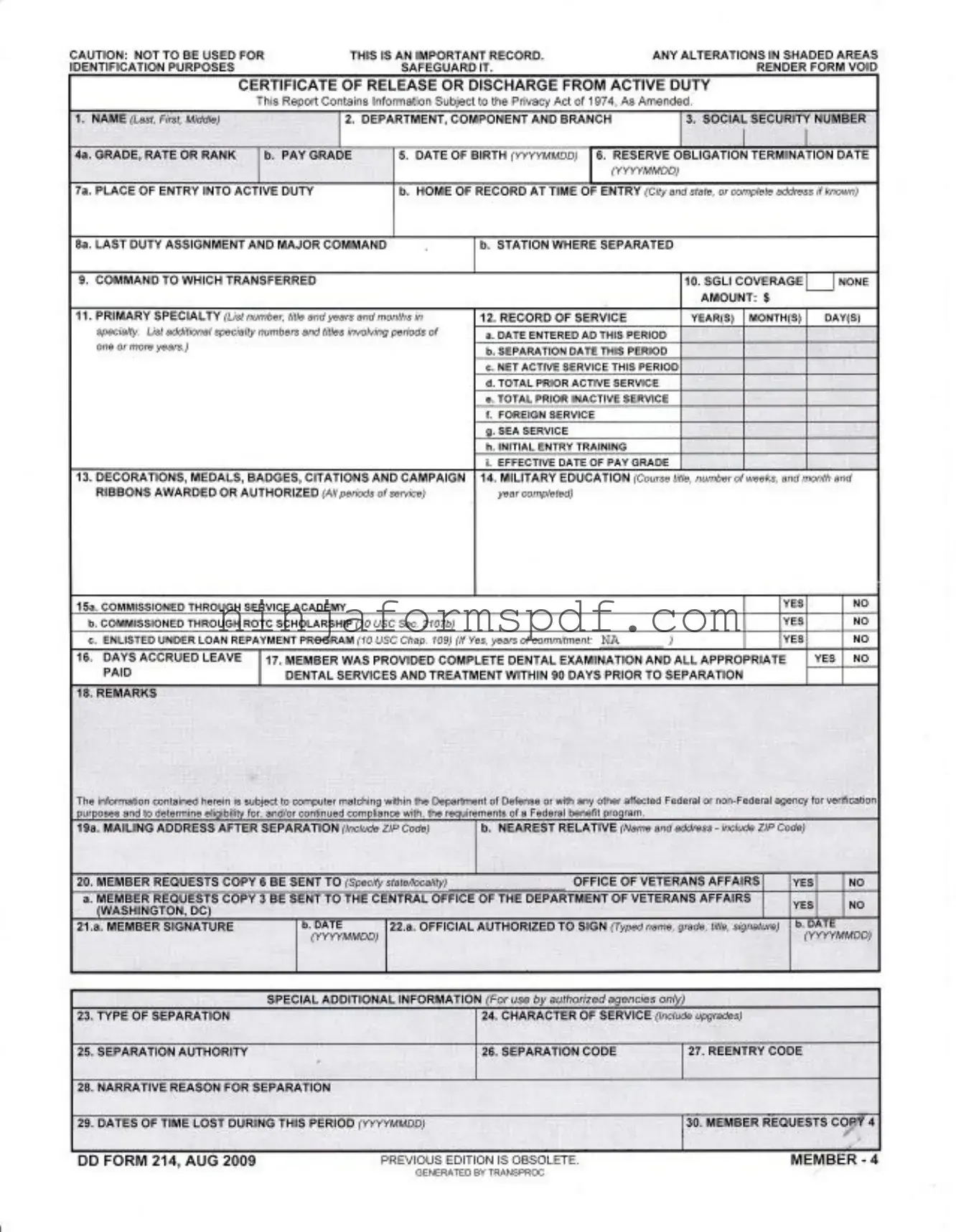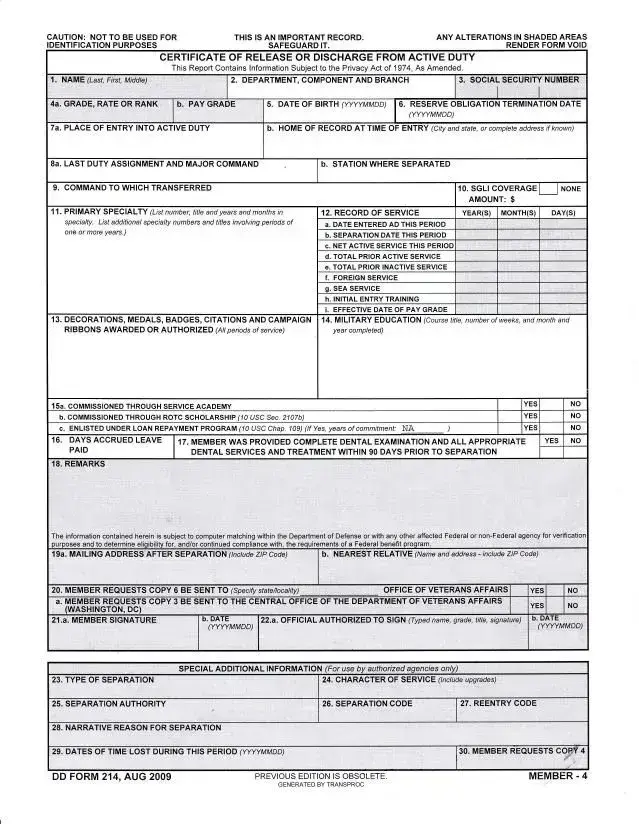The Birth Certificate is a foundational document similar to the DD Form 214 in that both serve as critical records for life-changing situations. Just as a DD Form 214 provides a summary of a service member's career and the conditions of their discharge, a Birth Certificate is the official record of an individual's birth, containing important details such as date of birth, place of birth, and parentage. These documents are crucial for verifying identity and eligibility for various benefits and services.
The Passport is another document with similarities to the DD Form 214, serving as a form of identification and a record of international travel. Much like the DD Form 214, which certifies a military service member’s duty status and service completion for civilian and governmental entities, a Passport provides proof of citizenship and the right to enter or leave countries. Both are essential for certain legal and bureaucratic processes.
Social Security Card issues are akin to the purposes of the DD Form 214. The Social Security Card is vital for accessing government services, taxation, and employment in the United States, much like how the DD Form 214 is necessary for veterans to access military benefits, education grants, and employment opportunities. Each document plays a key role in integrating individuals into certain societal frameworks.
The Driver’s License, similar to the DD Form 214, acts as a standard form of identification but also certifies a specific qualification: the legal authorization to operate a vehicle. In parallel, the DD Form 214 certifies the individual's military service and qualifications gained during service, such as specialized training. Both documents are frequently required for personal and professional verification processes.
Marriage Certificates and the DD Form 214 share their function as life event records essential for verifying personal status changes. A Marriage Certificate is proof of a legally recognized union, influencing rights and obligations, just as a DD Form 214 outlines the end of active military service and entitlement to veteran benefits. Both documents are required for certain legal and civilian benefits.
Professional Certification or Licenses, like the DD Form 214, denote a level of professional qualification and are necessary for individuals to pursue careers in specific fields. The DD Form 214 summarizes military qualifications and honors, which can support applications for civilian jobs or professional licenses, showing formal recognition of skills and experiences.
Transcripts from educational institutions are documents that catalog a student's academic record, similar to how a DD Form 214 provides a comprehensive overview of a service member’s military career. Both documents are used to verify qualifications and accomplishments, playing crucial roles in applications for further education or employment.
Vaccination Records share a purpose with the DD Form 214 in terms of health and medical documentation. Just as vaccination records are necessary for verifying immunizations for school, travel, or employment, the DD Form 214 can include information relevant to health benefits, exposures, and treatments received or needed as a result of military service.
The Employment Record, mirroring the utilitarian role of the DD Form 214, is a dossier of an individual’s work history and qualifications. Similarly, the DD Form 214 serves as the definitive record of a veteran's service, including ranks held, positions, duties, and achievements, which is critical for career development and transitions into the civilian workforce.
Lastly, the Death Certificate, analogous to the DD Form 214, is an official record marking the conclusion of an individual's life, providing essential details for legal and official purposes. The DD Form 214 signifies the conclusion of a service member's active duty status, while a Death Certificate marks the end of a person's legal and civic identity, both serving as key documents in respective administrative processes.

